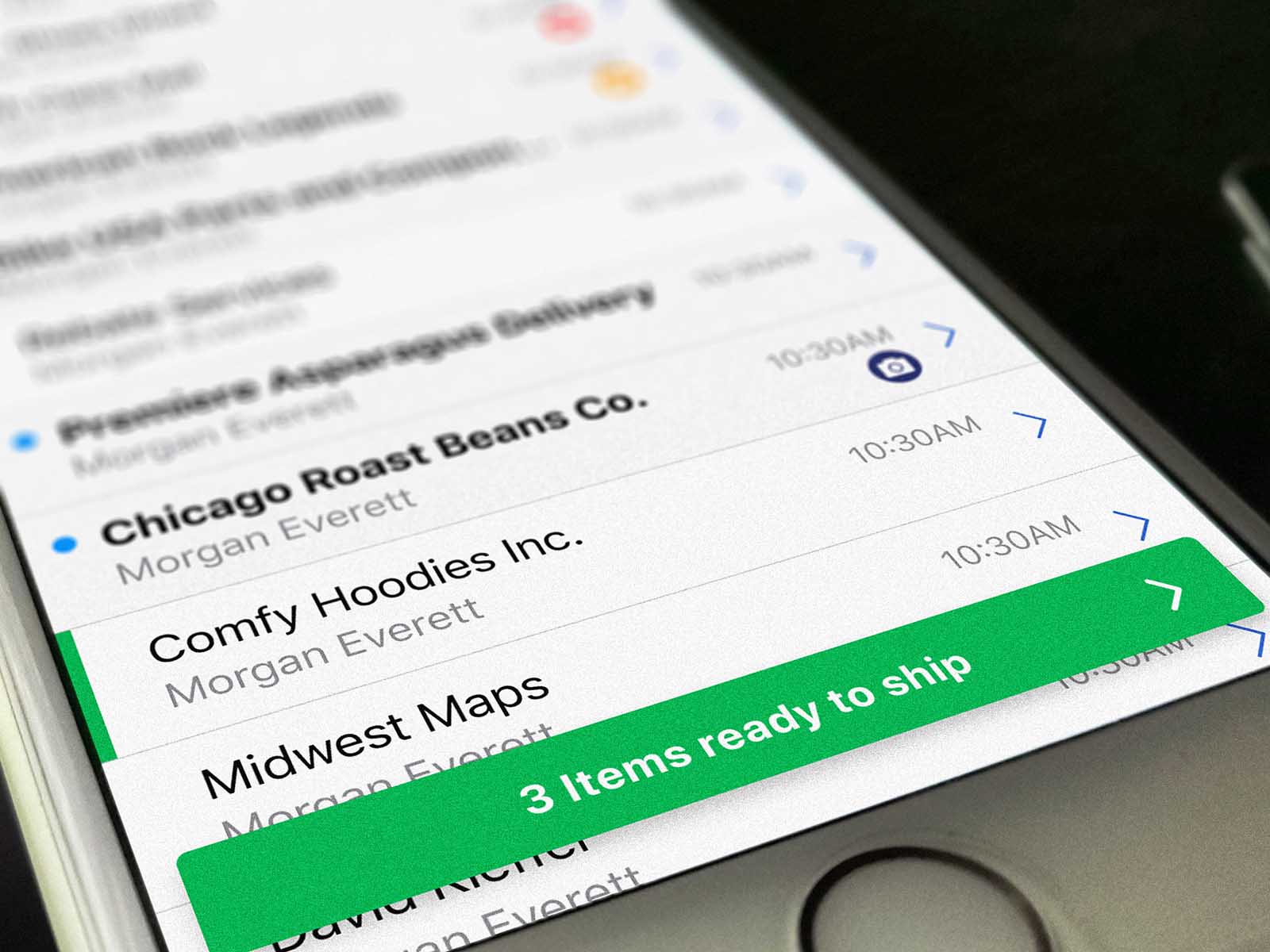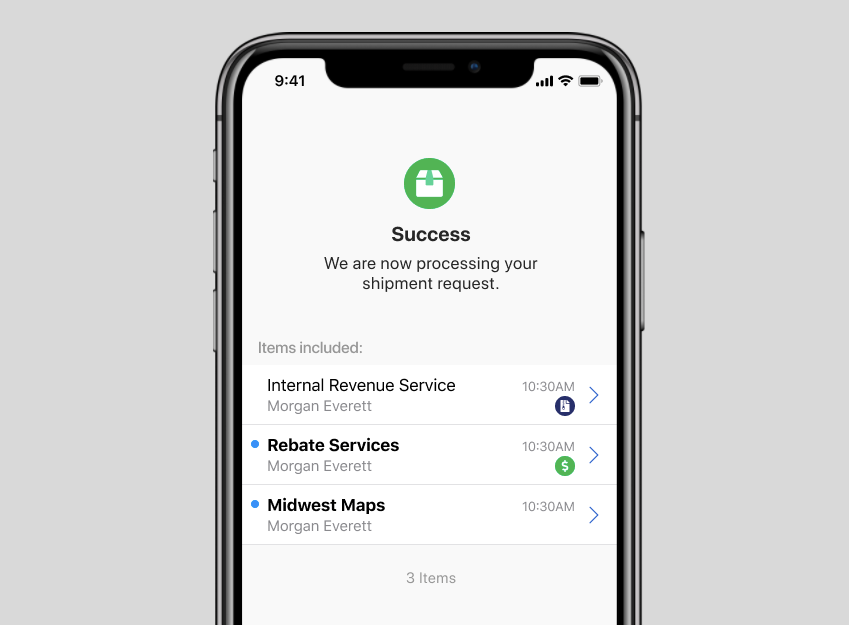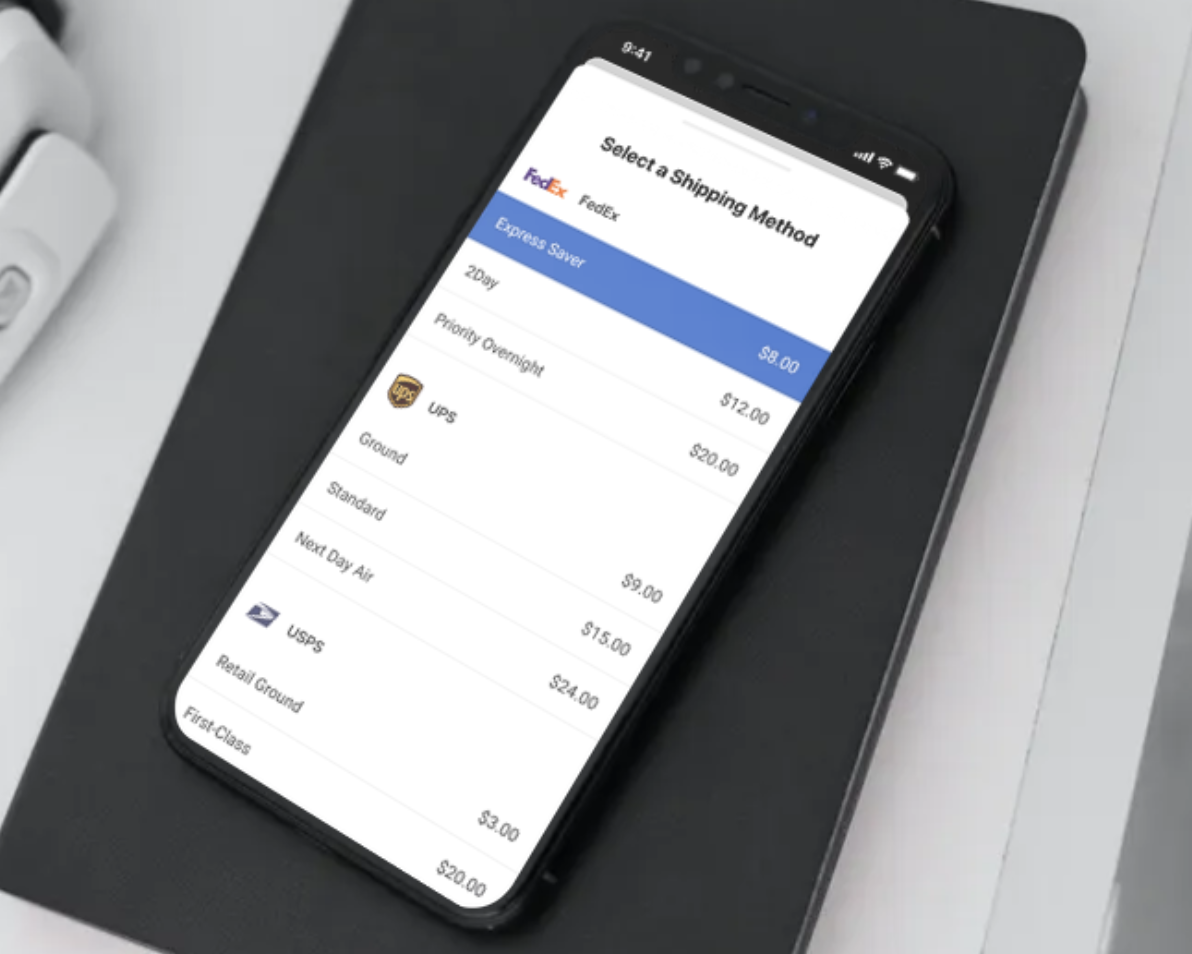Building Shipments
Case Study
A product that helps manage real-world, physical items has a lot of complexities that a typical SAAS product doesn’t have to worry about. This particular project began with a common complaint from our customers: shipping their stuff from our app was frustrating.
Some people were specific with their issues, others were blunt, but the common thread of frustration was there. At face value, creating a shipment doesn’t sound like something that should be too terribly labyrinthine, but underneath the surface there was a big set of variables that multiplied the complexity.
Research
To better understand the problem, I started with research. I went back through all the feedback we’d received over the past six months related to shipping. This helped get a broad sense of the pain points, and it also helped build a focused list of users that might be interested in talking about their experiences.
I also dug into usage data. I needed to get a better understanding of how people used the product in its current state. How often were people making shipments? How many items were they shipping at once? International or domestic? Etc.
Next, the design team interviewed as many customers as we could talk to—the people that actually use the product to create shipments. These conversations were critical. Folks were using all sorts of unexpected methods to try to organize and prepare shipments. More importantly we learned that many people didn’t even care about the things we assumed they would. These insights would never have been uncovered if we had only focused on analytics.
Internally, we also needed to interview our coworkers on the operational side of the process. It was important to understand the finer points of how shipping requests were processed by our technicians. From these conversations we saw even more areas for improvement.
Validating Solutions
My team came up with a concept to help make managing shipments better. If customers were bundling multiple items together for their shipments, why not give them a simple way to manage this task? A shipping cart.
It was time to prototype. Our strategy was aimed at tightening the feedback loop as much as possible. This meant rather than building this solution across all our applications, requiring significant back end support, we decided to begin strictly in our iOS app.
We wireframed a flow and shared it with different areas of the company. We got confirmation this new flow would work for the ops team, and the dev team helped dispell some bad assumptions about how the system talked with third party services. Getting feedback from multiple areas of the company helped us iron out wrinkles before getting too far.
The next step was to build a high fidelity prototype and test it. From our wireframes I fleshed out the design, and wrote a short test with several tasks to complete. I took special care to make sure our prototype could handle as many paths as possible to decrease the chances of the test getting derailed. We scheduled the tests with customers that fit our profile—folks that made shipments at least semi-frequently and were iOS users.
From these tests, we were pleased by how easily folks were completing the tasks. We uncovered minor tripping points that were easily fixed. I also designed a prompt for feedback at the end of the shipping process. We made some minor adjustments based on our findings from the usability test and set the dev team loose.

Outcomes
Two weeks later our new shipping cart feature was live. The feedback from our customers was positive, but we’re still finding ways to improve. We’ve now iterated on the design several times making the experience even more streamlined. With this tighter feedback loop, we’re confident in committing to expanding this feature across the platform.
Beyond good feedback from our customers, it is important to define metrics for success at the outset. I was interested in quantitatively measurable outcomes. This meant two things: less customer support tickets related to shipping and a quicker time from start to finish of requesting a shipment.
In conclusion, starting with research, talking with customers, testing our ideas, and sharing across teams made for a solid design that lead to a better experience for our customers.

Posted March 28, 2020